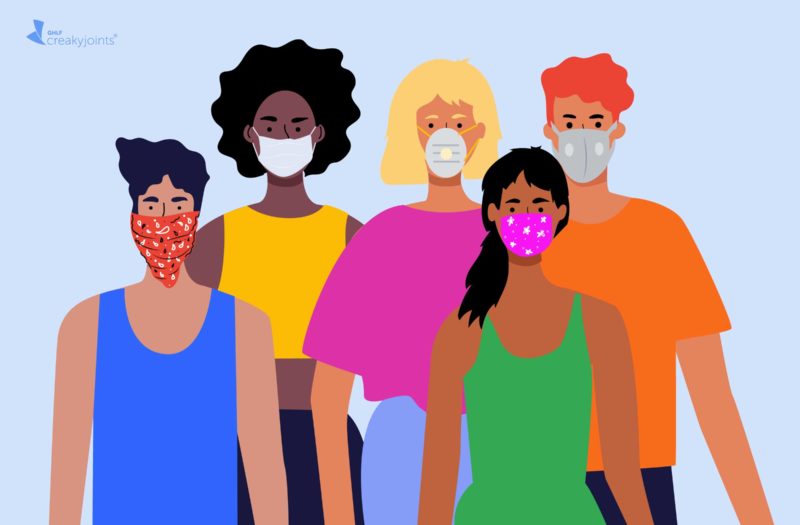Learn more about our FREE COVID-19 Patient Support Program for chronic illness patients and their loved ones.
The United States recorded more than 7 million cases of COVID-19 as of the end of September. However, the age of those who are contracting coronavirus has shifted significantly from the start of the pandemic.
During the first few months of the pandemic, the incidence of COVID-19 was highest among older adults. However, from June through August of this year, COVID-19 incidence was highest in people ages 20 to 29. This age group who accounted for more than 20 percent of all confirmed cases, per a new report from the U.S. Centers for Disease Control & Prevention Morbidity and Mortality Weekly Report.
The nationwide median age of COVID-19 cases declined from 46 years in May to 37 years in July and 38 in August.
The Risk of Young Adults Spreading COVID to Others
In the southern United States where there were regional outbreaks of COVID-19 in June, positive SARS-CoV-2 (the virus that causes COVID-19) test results among adults ages 20 to 39 preceded increases in cases among adults ages 60 and older by an average of 8.7 days.
This shows that younger adults likely contributed to the community transmission of COVID-19.
The researchers obtained the test results from reporting data submitted by state health departments (37 states). When age was unavailable, they used data submitted directly from public health, commercial, and reference laboratories (13 states and Washington, D.C.).
“The shift toward younger ages occurred in all four U.S. Census regions, regardless of changes in incidence during this period, and was reflected in COVID-19-like illness-related [emergency department] visits, positive SARS-CoV-2 RT-PCR test results, and confirmed COVID-19 cases,” note the researchers.
In Europe, a similar shift occurred. The median age of COVID-19 cases dropped from 54 years in January through May to 39 years during June through July, in which individuals ages 20 to 29 made up the largest proportion of cases.
Why Young Adults Are Particularly Susceptible
For one thing, a return of young adults to college campuses appears to be playing a role. A separate MMWR report found that from August 2 to September 5, weekly COVID-19 cases among people between 18 and 22 increased 55 percent nationally. Although increased incidence was likely driven in part by an increase in COVID-19 diagnostic testing, this is unlikely to be the sole reason for the observed increases in incidence, according to the report.
The authors wrote that, “mitigation and preventive measures targeted to young adults can likely reduce SARS-CoV-2 transmission among their contacts and communities. As colleges and universities resume operations, taking steps to prevent the spread of COVID-19 among young adults is critical.”
While younger adults might be less likely to follow mitigation strategies like social distancing, that’s not the only reason they’re at higher risk for contracting COVID-19. Younger adults make up a large proportion of workers in frontline jobs (like those in public transit, child care, and retail stores) and highly exposed industries (like restaurants, bars, and entertainment).
Because they are also more likely to have mild or no symptoms, they can contribute to pre-symptomatic or asymptomatic transmission to others — including those at high-risk for complications — without realizing it.
There are some limitations to the findings in this report, including that case report data submitted to CDC underestimates true incidence and that batch reporting of historical cases in some states might have led to spikes in median age trend lines.
Still, increased prevalence of COVID-19 cases among younger adults is likely to contribute to community transmission.
“Given the role of asymptomatic and presymptomatic transmission, all persons, including young adults, should take extra precautions to avoid transmission to family and community members who are older or who have underlying medical conditions,” note the researchers.
A draft of COVID-19 vaccination recommendations suggests that young adults (ages 18 to 30) and children may receive some level of prioritization, though the guidelines are not yet finalized.
Get Free Coronavirus Support for Chronic Illness Patients
Join the Global Healthy Living Foundation’s free COVID-19 Support Program for chronic illness patients and their families. We will be providing updated information, community support, and other resources tailored specifically to your health and safety. Join now.
Boehmer TK, et al. Changing Age Distribution of the COVID-19 Pandemic — United States, May–August 2020. U.S. Centers for Disease Control and Prevention. Morbidity and Mortality Weekly Report. doi: http://dx.doi.org/10.15585/mmwr.mm6939e1.
CDC COVID Data Tracker. U.S. Centers for Disease Control & Prevention. September 29, 2020. https://covid.cdc.gov/covid-data-tracker/#trends_dailytrends.
Salvatore PP, et al. Recent Increase in COVID-19 Cases Reported Among Adults Aged 18–22 Years — United States, May 31–September 5, 2020. U.S. Centers for Disease Control and Prevention. Morbidity and Mortality Weekly Report. doi: http://dx.doi.org/10.15585/mmwr.mm6939e4external icon.






